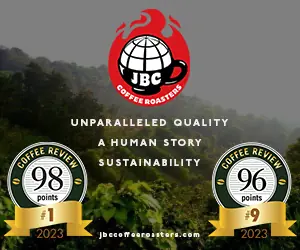So let’s blog again like we did last summer. Reviewing three or four descriptive terms per week is the new plan.
Judging by an occasional puzzled email, sweetness may be one of the more confusing terms for those new to coffee description. We use the term regularly in our reviews, and it’s one of the most important technical descriptors used in evaluating quality in green coffee.
Yet readers who buy a coffee we call “sweet” will be disappointed if they expect it to taste like sugar. Sweetness in coffee is subtle, yet also pervasive and precious. It underpins much of what we value in coffee, from the honeyed floral notes of light-roasted coffees to the pungent dark chocolate of darker roasts.
Yet coffee is, after all, a naturally bitter beverage, and bitterness too is part of its appeal. But we can take bitterness for granted in coffee. It will always be there. Promoting natural sweetness, however, requires effort, a lot of effort.
If you taste a ripe coffee fruit of the arabica species, fresh off the tree, several sensations probably will strike you, among them: it tastes a little tart, a little bitter, but also a little sweet. Not extremely sweet, but discernibly so.
Returning to the effort part, almost any act of carelessness as coffee is transformed from ripe fruit to roasted bean will promote bitterness and reduce sweetness. Too much green, unripe, bitter-astringent fruit in the harvest, for example, rather than sweet, ripe fruit. Failing to dry the beans properly, allowing the formation of sweetness-dampening moulds. Failing to transport or store the beans properly. Roasting them too dark too fast. And if the coffee makes it through all of that, we can destroy any amount of natural sweetness by letting the brewed coffee sit on a hot plate for more than a few minutes.
So a good part of the care that goes into harvesting, removing the fruit residue and drying a fine coffee is aimed at preserving the original fragile sweetness reflected in the taste of the fruit. It makes everything else going on in a fine coffee better: the acidity (fuller and less sharp), the floral and fruit notes (more honeyed and ripe), caramelly and chocolate sensations in a darker roast deeper.
Essentially, many coffee drinkers are so accustomed to the dominating bitter character of ordinary coffee that they automatically add whitener and sweetener to their cup. At Coffee Review we value sweetness in particular because it encourages coffee drinkers to take their coffee black, or at least without sweetener, and experience the coffee itself, its subtle pleasures unwrapped for us by a sweetness given by nature but obsessively nurtured by grower, miller and roaster.
In a few days: flowers and aromatic wood, two positive though rather opposing descriptors we use often in our reviews.











